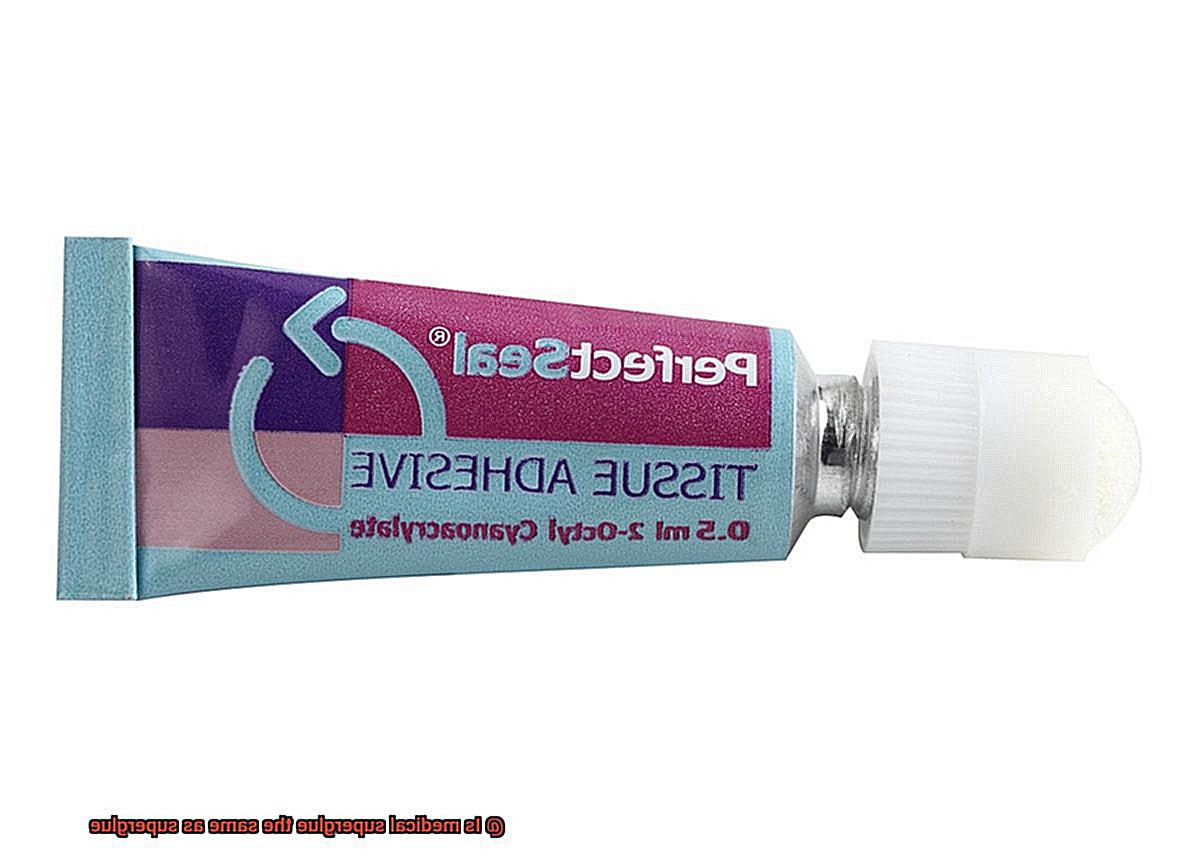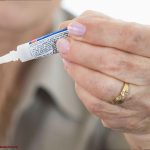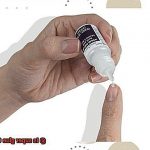Get ready to dive into the intriguing realm of glue as we tackle a burning question: is medical superglue just like your everyday superglue? Sure, they both stick things together like nobody’s business, but hold on tight because we’re about to reveal the secrets behind their distinct purposes and formulations.
Join us on this adhesive adventure as we uncover the similarities and differences between these two powerhouses. Brace yourself for some mind-blowing science and discover how medical superglue works its magic in the world of medicine.
So, let’s stick around (pun totally intended) and unravel all the juicy details about this captivating topic.
What is Medical Superglue?
Contents
In the realm of medicine, innovation knows no bounds. From groundbreaking surgical techniques to cutting-edge technologies, every advancement aims to improve patient outcomes and enhance healing. Among these innovations, medical superglue, also known as surgical adhesive or tissue adhesive, has transformed wound closure and tissue repair. This article explores the captivating properties of medical superglue and its vital role in modern medical and surgical procedures.
The Science Behind Medical Superglue:
At its core, medical superglue shares similarities with regular superglue in terms of chemical composition. Both are typically made from cyanoacrylate compounds. However, medical superglue undergoes modifications to ensure it is safe for use on human tissues. It is sterile, biocompatible, and non-toxic, making it suitable for a wide range of medical applications.
Benefits and Uses:
- Quick and secure bonding: Medical superglue forms a strong adhesive bond within seconds or minutes, promoting faster wound closure and reducing the risk of infection.
- Flexibility and elasticity: Unlike regular superglue, medical superglue is designed to withstand the body’s natural movements without breaking or coming apart, allowing for proper healing.
- Ease of use: The liquid form of medical superglue enables precise application using specialized applicators or syringes, saving time during surgical procedures and ensuring accurate wound closure.
- Versatility: Medical superglue finds application in various procedures such as closing incisions, sealing blood vessels, repairing small tears in tissues, and even as an alternative to traditional sutures.
Important Considerations:
While medical superglue is a remarkable tool in the field of medicine, it is essential to note its limitations. It should only be used on small, superficial wounds that do not involve deep tissue layers or organs. For more extensive repairs or deeper sutures, traditional stitching techniques may be more appropriate.
What is Regular Superglue?
Prepare to be amazed as we delve into the captivating world of regular superglue. Get ready for a thrilling exploration of this incredible adhesive that can work wonders in your DIY projects and quick fixes.
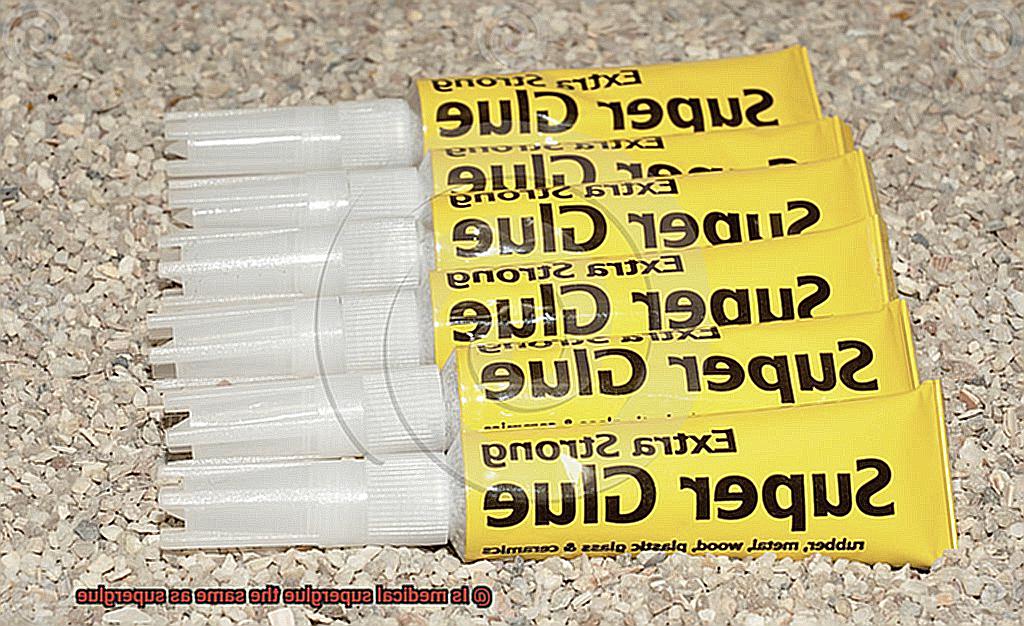
Regular superglue, scientifically known as cyanoacrylate adhesive, is a true game-changer when it comes to bonding materials together. With its exceptional clear, strong, and fast-drying properties, this glue is a superhero among adhesives. So, what makes it so special? Let’s break it down for you:

- Lightning-fast bonding: Regular superglue is like the Flash of adhesives. It dries within seconds to minutes, allowing you to swiftly continue with your project. Say goodbye to long waiting periods and hello to instant gratification.
- Versatility at its finest: This glue is a true master of versatility. It can bond a wide range of materials with ease. Metal? Check. Plastic? No problem. Rubber? Absolutely. Ceramic or wood? You betcha. Regular superglue has got you covered, no matter what materials you need to join together.
- Viscosity options for every need: Thin or thick? The choice is yours. Thin superglue is perfect for delicate projects that require precision, while the thicker gel-like consistency works wonders for vertical applications or filling gaps.
But wait, before you dive into a superglue frenzy, there are a few things you should keep in mind:
- Not all materials are superglue-friendly: While regular superglue can bond most materials effortlessly, it may encounter difficulties with certain plastics like polyethylene or polypropylene. And let’s not forget that some types of rubber might put up a tough fight too.
- Handle with care: Regular superglue should be treated with the utmost caution, like a powerful potion from a wizard’s lab. If you’re not careful, it can bond skin and eyes together. So, make sure to wear gloves and protective eyewear to avoid any sticky situations.
Regular superglue is an incredible adhesive that can work wonders in various projects. From fixing broken items to creating impressive DIY crafts, this bonding marvel has got your back. Just remember to use it wisely and handle it with care.
So, my fellow glue enthusiasts, the next time you reach for regular superglue, remember its lightning-fast bonding ability, its versatility in materials, and the precautions you need to take. Embrace the power of regular superglue and let it work its magic in your crafting adventures.
Composition Differences
Superglue, the unsung hero of quick fixes and DIY projects, comes in two distinct forms: regular superglue and medical superglue. While they may appear similar on the surface, their composition reveals some key differences that render them suitable for different purposes. Prepare yourself to embark on a fascinating journey into the realm of glue as we delve deep into the hidden secrets behind the composition differences between these two types.
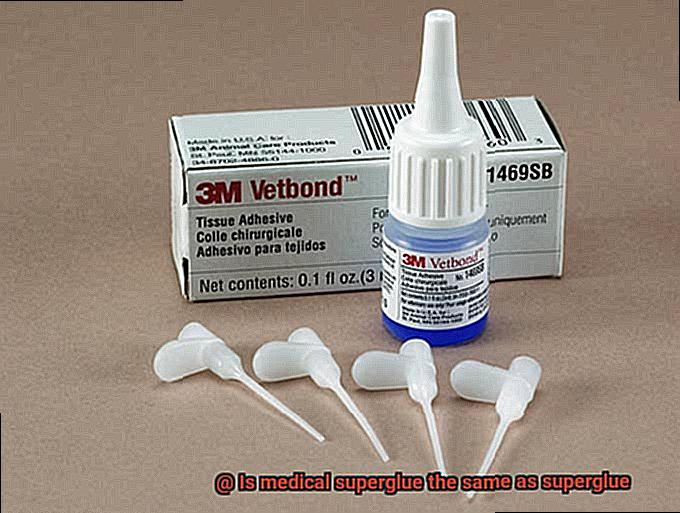
Chemical Makeup:
Regular superglue primarily consists of cyanoacrylate, an adhesive that sets rapidly and adheres to various surfaces with remarkable speed. Conversely, medical superglue, also known as tissue adhesive or surgical glue, is a modified variation of cyanoacrylate that has been specifically tailored for use in medical procedures.
Biocompatibility:
The crux of the disparity lies in the additives and sterilization processes involved in manufacturing medical-grade adhesive. These modifications ensure that medical superglue is biocompatible, meaning it is safe for use on human skin and internal tissues without inciting adverse reactions or causing tissue damage.
Additional Compounds:
In addition to its core components, medical superglue often incorporates additional compounds such as plasticizers or stabilizers in order to augment its flexibility and strength. These additives empower the glue to withstand the relentless stresses and movements of the body without compromising its adhesive properties.
Purity and Quality Control:
Unlike its regular counterpart, medical superglue undergoes rigorous testing and meticulous quality control measures to meet stringent safety standards. This comprehensive scrutiny includes sterilization processes that obliterate potential contaminants or pathogens which could trigger infections or complications during medical procedures.
Absorbability:
Diverging from regular superglue, medical superglue can be formulated to be absorbable by the body over time. This remarkable feature allows the glue to gradually disintegrate and be replaced by natural tissue during the healing process, ensuring seamless restoration.
Sterility Differences
While these terms may seem similar, they actually represent distinct concepts that have significant implications in the realm of reproductive health. So, let’s dive in and unravel the mysteries of sterility and infertility.
First, let’s clarify the meaning of sterility. Sterility refers to the inability to produce offspring or conceive a child. It can be caused by various factors, including medical conditions, genetic abnormalities, hormonal imbalances, or physical obstructions. When a person or couple is deemed sterile, it means they are unable to achieve pregnancy despite regular and unprotected intercourse.
On the other hand, infertility encompasses a broader spectrum of reproductive challenges. Infertility is defined as the inability to conceive after one year of regular and unprotected intercourse for women under 35 years old, or after six months for women over 3It includes both sterility and other factors that may hinder or delay conception, such as ovulatory disorders, sperm abnormalities, fallopian tube blockages, or uterine abnormalities.
To further understand the differences between sterility and infertility, it is helpful to consider some key distinctions:
- Causes: Sterility is often attributed to specific medical conditions or physical factors that render conception impossible. Infertility, on the other hand, can stem from a range of issues affecting either partner or both.
- Treatability: While sterility may be irreversible in some cases, infertility can often be treated with various medical interventions, such as fertility medications, assisted reproductive technologies (ART), or surgical procedures.
- Emotional Impact: Both sterility and infertility can have profound emotional effects on individuals and couples longing for a child. However, the emotional toll of sterility may be particularly intense due to the perceived finality of not being able to conceive naturally.
- Language: The language surrounding these two concepts also differs slightly. Sterility carries a more definitive and absolute connotation, suggesting a permanent inability to conceive. Infertility, on the other hand, implies a temporary or potentially treatable condition that may still allow for the possibility of achieving pregnancy.
In conclusion, sterility and infertility are distinct yet interconnected concepts in the realm of reproductive health. Sterility refers to the inability to conceive or produce offspring, while infertility encompasses a broader range of factors that may hinder or delay conception. Understanding these differences can help individuals and couples navigate their reproductive journeys with greater clarity and informed decision-making.
Biocompatibility Differences
Today, we embark on an adhesive adventure to uncover the intriguing differences in biocompatibility between medical superglue and regular superglue. Buckle up as we dive into the sticky truth behind these adhesives.
The Battle of Biocompatibility:
In the realm of biocompatibility, medical superglue reigns supreme. This specialized adhesive is meticulously formulated and rigorously tested to ensure its safety for use on living tissue. On the other hand, regular superglue wasn’t designed with biocompatibility in mind and can potentially harm our precious cells.
Composition Matters:
The secret lies in the composition. Medical superglue is crafted from a modified compound called cyanoacrylate, with certain components removed or reduced to prevent adverse reactions within our bodies. In contrast, regular superglue contains additional chemicals that may induce allergic reactions or irritation when in contact with our sensitive skin or mucous membranes.
Damage Control:
Imagine trying to heal a wound with regular superglue – ouch. Medical superglue is designed to bond tissues together without causing harm. It gracefully degrades over time and gets absorbed by our bodies, allowing natural healing processes to occur.
In contrast, regular superglue’s strong adhesive properties can lead to tissue tearing or necrosis, hindering the healing process and potentially causing long-term complications.
Safety First:
Medical superglue undergoes extensive testing to ensure its biocompatibility and safety for use in medical procedures. Regulatory bodies like the FDA have set specific guidelines and standards for medical adhesives, guaranteeing patient safety.
Regular superglue, unfortunately, lacks this level of scrutiny and may pose unnecessary risks when used on living tissue.
Flexibility Differences
When it comes to the world of adhesives, there’s more than meets the eye. Today, we’re delving into the fascinating topic of flexibility differences between medical superglue and regular superglue. Whether you’re a DIY enthusiast or simply intrigued by the world of adhesives, this post will provide you with valuable insights.
Let’s start with regular superglue, also known as cyanoacrylate glue. It’s a fast-acting adhesive that quickly forms a strong bond between surfaces. Perfect for everyday repairs and craft projects, right? Well, hold on. Regular superglue has one major limitation – it lacks flexibility. Once it dries, it becomes rigid and brittle, making it prone to cracking or breaking when subjected to movement or stress.
Now, enter medical superglue – the hero of this story. Specifically designed for medical procedures and wound closure, it goes by names like “surgical glue” or “medical adhesive.” Unlike regular superglue, medical superglue is formulated to be flexible when applied to the skin. This means it can move and stretch with the natural movements of the body without causing discomfort or compromising the bond.
The flexibility of medical superglue is crucial in medical applications where the bonded area needs to withstand movement and stretching. Think of surgical incisions or wounds located in areas prone to frequent movement like joints or the face. Medical superglue ensures that the wound remains closed during healing while allowing for natural body movements.
But wait, there’s more. Medical superglue has other properties that make it ideal for medical use. It’s sterile and biocompatible, meaning it doesn’t cause any adverse reactions or harm to living tissue. Plus, it’s non-toxic and safe for use on the skin. So when it comes to wound closure, medical superglue is a safe and effective alternative to traditional sutures or staples.
It’s important to note that regular superglue should never be used for medical purposes. Its lack of flexibility and biocompatibility make it unsuitable and potentially harmful when dealing with injuries or wounds. Always consult a healthcare professional and opt for medical superglue when it comes to medical-related applications.
So there you have it, the flexibility differences between medical superglue and regular superglue. Medical superglue saves the day with its ability to stay flexible and withstand the natural movements of the body, while regular superglue falls short in the flexibility department. Remember, making informed decisions about wound closure and medical procedures is crucial for ensuring safe and effective healing.
Application Differences
Today, we embark on an intriguing journey to explore the fascinating application differences between medical superglue and regular superglue. As we delve into this topic, prepare to discover the unique formulations, viscosity variances, additional compounds, application techniques, and specific purposes of these two adhesive superheroes.
Regular Superglue – The Versatile DIY Champion:
Regular superglue, also known as cyanoacrylate adhesive, is the household hero that comes to the rescue for a wide range of repairs. Here’s what sets it apart:
- Versatility: Regular superglue bonds materials like wood, metal, plastic, and ceramics with ease.
- Quick and Strong: It cures rapidly, forming a powerful and durable bond.
- Runny Consistency: Its thin viscosity allows it to penetrate small gaps and cracks effectively.
- DIY Application: With its precise applicator tip, regular superglue ensures controlled and easy application for your home projects.
Medical Superglue – The Healing Guardian:
Now let’s meet its noble sibling – medical superglue, also known as surgical glue or tissue adhesive. Here’s why it deserves its title in the medical realm:
- Sterile and Biocompatible: Medical superglue is specially formulated to be safe on human tissues without causing harm or adverse reactions.
- Thick Consistency: Its viscosity is thicker than regular superglue, ensuring it stays in place when applied to wounds or incisions.
- Enhancements for Healing: Medical superglue often contains additives such as antibacterial agents to prevent infection, flexibility enhancers for body movement accommodation, and hemostatic agents to aid in stopping bleeding.
- Professional Application: Trained medical professionals use specialized applicators or devices to align wound edges before applying medical superglue along the incision line, promoting healing and wound closure.
The Application Dance:
Regular superglue and medical superglue have different application techniques:
- Regular Superglue: Clean and dry surfaces are a must for optimal bonding. Apply a small amount of glue on one surface, press the two pieces together firmly, and voila. It sets in seconds, reaching full strength within hours.
- Medical Superglue: Only trusted medical professionals should handle this superhero glue. They use specialized applicators to carefully align and approximate wound edges before applying the glue. After drying, it forms a flexible barrier that holds the wound together.
Now that we’ve unraveled the secrets of medical superglue and regular superglue, you can confidently differentiate between these adhesive champions. Remember, regular superglue is your go-to for household repairs, while medical superglue is reserved for trained professionals in healthcare settings.
So, whether you’re fixing a broken mug or supporting the healing process of a surgical incision, choose your glue wisely and unleash its adhesive powers responsibly.
Also Read: Is Krazy Glue Toxic?
Conclusion
To wrap things up, it’s important to recognize that medical superglue and regular superglue are not one and the same. Although they may share some chemical similarities, medical superglue undergoes crucial modifications to guarantee its safety for use on human tissues. It’s a sterile, biocompatible, and non-toxic adhesive that is tailor-made for a wide range of medical applications.
The disparities between medical superglue and regular superglue lie in their intended purposes and formulations. Medical superglue is specifically engineered for wound closure and tissue repair during medical procedures. It offers rapid and secure bonding, as well as the flexibility needed to withstand the body’s natural movements. With precise application methods and versatility across various medical scenarios, it truly stands apart.
On the other hand, regular superglue is best suited for everyday repairs and DIY projects. It dries quickly to form a strong bond between materials but lacks the biocompatibility and flexibility required for medical use. Using regular superglue on living tissues can lead to harm or adverse reactions – something you definitely want to avoid.
In summary, both types of glue possess their own unique properties and uses. However, it’s crucial to grasp that medical superglue is specifically formulated for medical purposes and should only be handled by trained professionals.

